[ad_1]
The spectacle of flashy new hardware can be a lot of fun, but there’s something respectably honest about new versions of products that are blatantly iterative — not everything can be reinvented from the ground up every couple of years, as much as tech companies would like to pretend otherwise. The 2022 iPad Air is such an iterative update: Apple took 2020’s model, jammed newer parts in it, and shoved it out the door at the same $600 MSRP. The result is a crazy-powerful tablet at what seems like an uncharacteristically fair price, but whether it’s right for you is going to come down to the details.
The 2022 iPad Air is a powerful, attractive tablet at a very fair price, but its 64 gigabytes of base storage may be too low for some, and the steep cost of upgrading to 256 gigs makes the tablet a worse deal.
- Storage: 64, 256GB
- CPU: Apple M1
- Memory: 8GB
- Operating System: iPadOS 15.4
- Battery: “28.6-watt‐hour”
- Ports: USB-C 3.1
- Camera (Rear, Front): 12MP f/1.8 rear; 12MP f/2.4 front
- Display (Size, Resolution): 10.9″ 2630×1640 IPS LCD, 60Hz
- Price: Starting at $599
- Measurements: 247.6 x 178.5 x 6.1mm, 1.02 lbs
- Extremely fast performance
- Great accessory selection
- Same price as the last version
- 64GB base storage is too low and it costs too much to upgrade
- All those great first-party accessories are expensive
- Build quality might not be up to Apple’s normal standard

Design, hardware, what’s in the box
The new iPad Air looks like every other modern iPad: it’s slim and boxy with rounded corners, and a selfie camera that’s centered when the tablet is held vertically, in portrait. That selfie camera is one of few upgrades from the last iPad Air: it’s an updated 12-megapixel sensor with a 122-degree field of view and support for Apple’s Center Stage subject tracking.
Physically, most of 2022’s model is unchanged from 2020’s. It’s the same design in the exact same size, with the same 11-inch, 60Hz LCD display — buttons, ports, connectors, and cameras are all where they were two years ago. Considering the previous generation’s look was already modern and handsome, it’s hard to complain about any of this. You can also get the Air in a lovely blue finish this year.
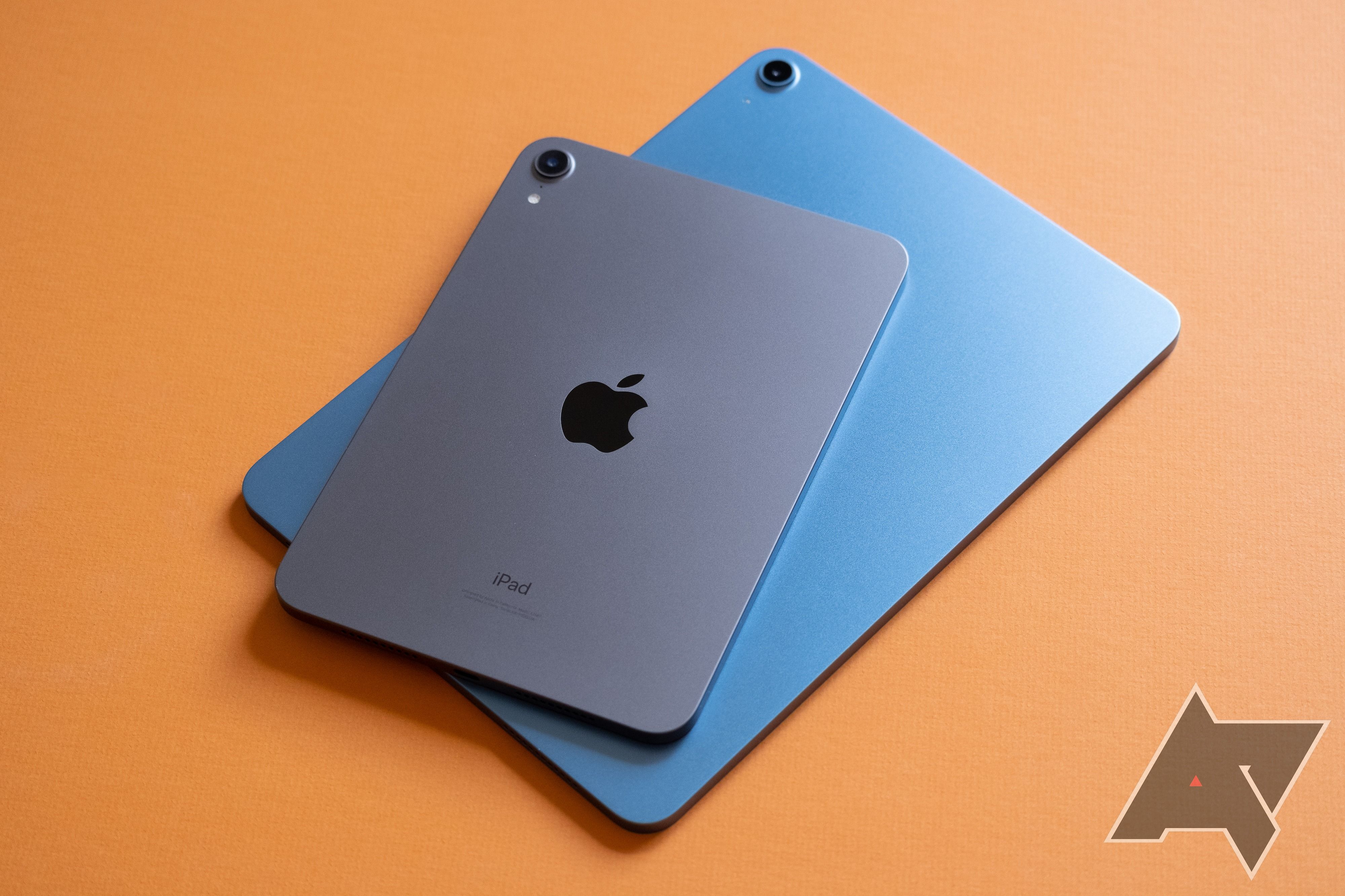
2022 iPad Air under 2021 iPad Mini.
Even if it is a little dated by Android standards, the iPad Air’s LCD screen is crisp and vibrant, and Apple’s True Tone feature that aims to match color temperature to your environment really does make reading text on white backgrounds a little nicer (you can turn True Tone off if you value color accuracy over comfort). Its stereo speakers, also unchanged from the previous generation, are loud and surprisingly full and bassy for such a thin device.
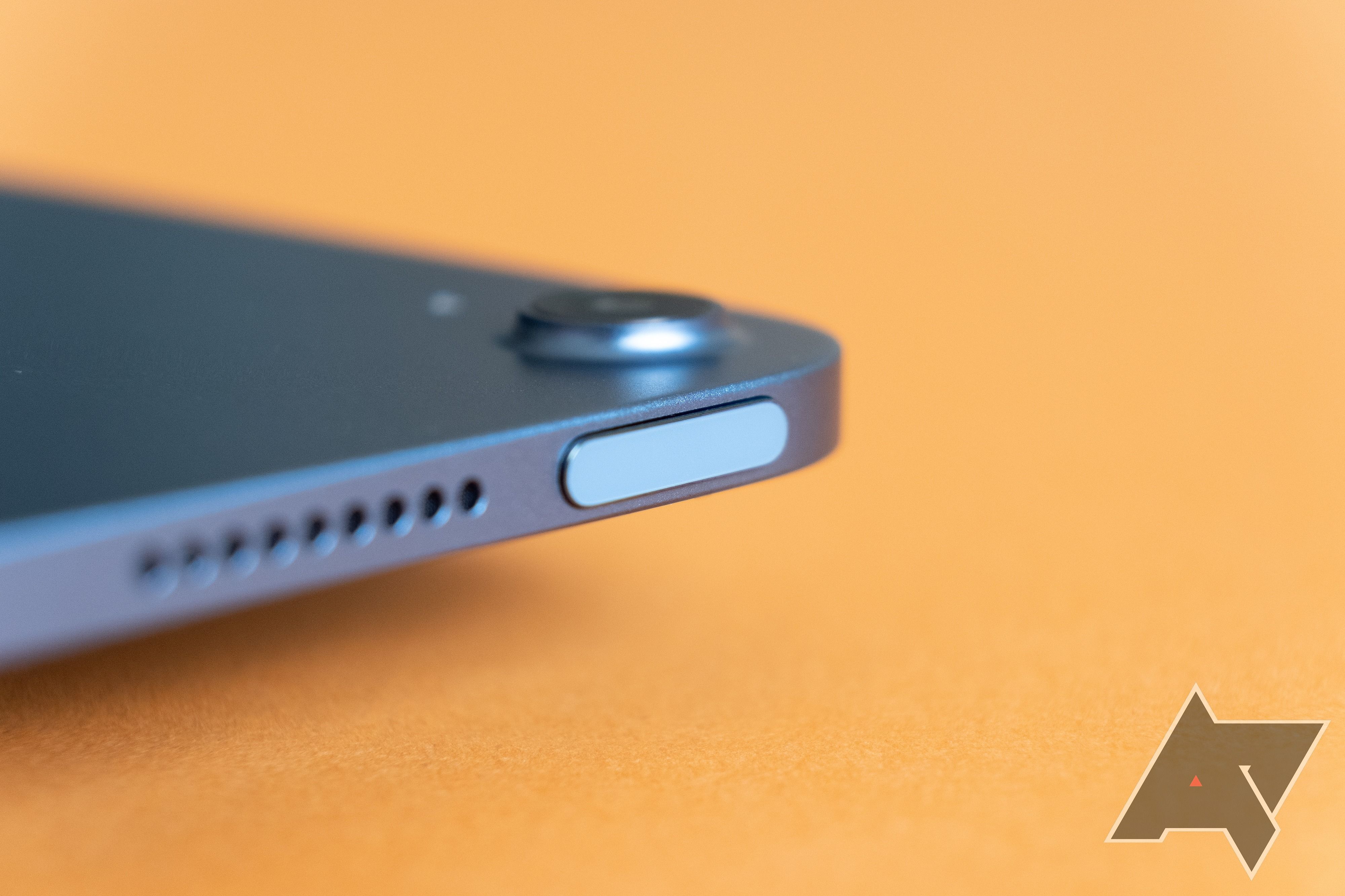
Touch ID is built into the power button.
The tablet isn’t as sturdy as I’d expect an Apple product to be, though. The new Air bends and creaks a bit when flexed — and with troublingly little pressure applied to its back, you can see some internal part pressing against the underside of the display. I assume this has to do with shuffling the tablet’s guts around to accommodate updated components, and I don’t ever see it being an issue in normal use. Still, I shudder to think what could happen if you forgot you left the thing on your couch.
The iPad Air comes with a 20-watt power brick and a USB-C-to-C cable — along with the usual literature and Apple logo stickers.
Software, performance, and battery
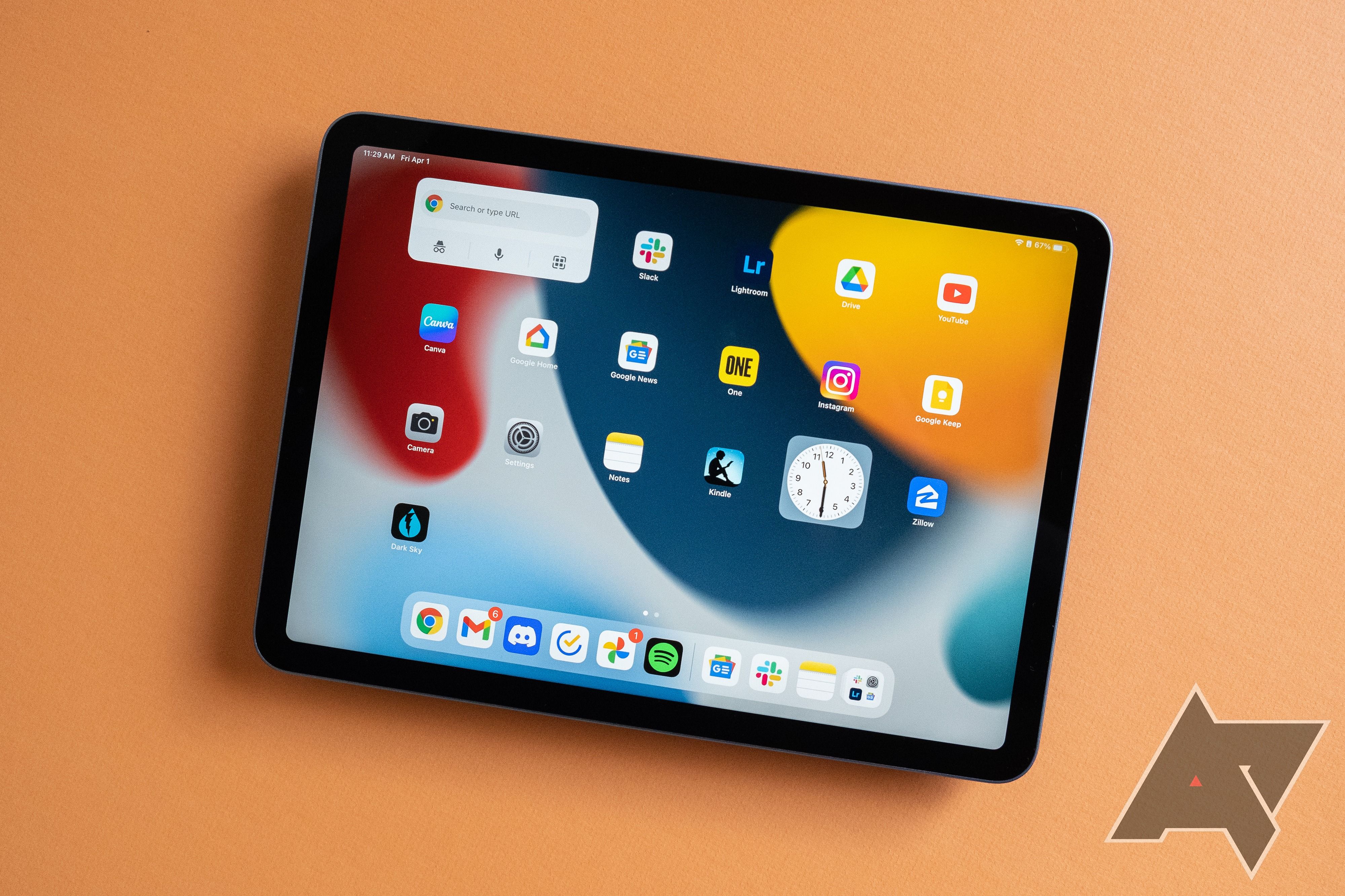
Coming from Android, iPadOS is only slightly foreign. Navigation, file management, and even notifications all work kind of the way you’re used to, and iPadOS has only gotten more Android-like in recent years with additions like home screen widgets and an app drawer (well, it’s not really a drawer on iPad, but it’s the same idea).
Some quirks are easier to live with than others. Android and iPadOS’s gesture navigation, for example, are broadly similar, and on a device you’ll only ever use two-handed, not having a universal back gesture isn’t so bad. Other UI decisions — ones that might make sense to someone who’s used Apple software for years — are positively arcane coming from Android.
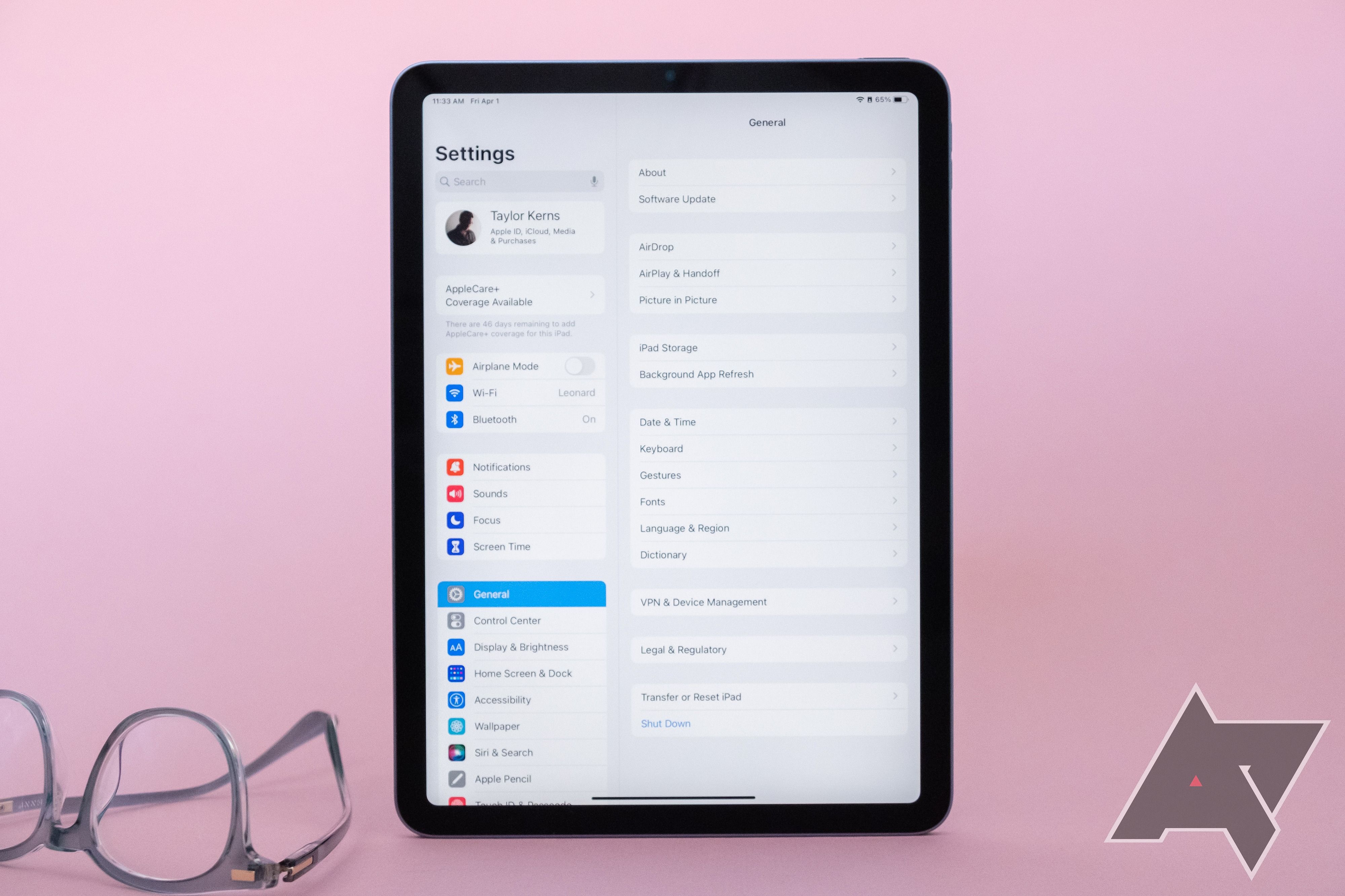
Case in point: I often like to use wallpapers from Chrome OS on other devices, so I downloaded some on my iPad. Looking at them in the Files app, though, I couldn’t see how to apply them. After a few minutes of poking around, I gave up and Googled it. Turns out I had to go to the image I wanted to use in Files, tap the share icon, then select an option labeled Save Image to make it appear in the Gallery app. Once the image was in my camera roll, I could apply it as a wallpaper from there. Maybe there’s some logic to doing things that way, but it’s lost on me — it’s just opaque and frustrating.
Some iPad software features are a joy, though. Certain ones, like the ability to swipe up from the bottom right corner of the screen at any time to open a floating Apple Notes window, have secured spots in my daily routine. There’s also a wealth of ecosystem tie-ins, many of which are fantastic — if you’ve got any other Apple devices around to take advantage of them. My favorite right now is Universal Control, which, with very little setup required, lets you control an iPad and a Mac computer running MacOS 12.3 simultaneously with a single mouse and keyboard: Just move the cursor off your computer screen in the direction of your iPad and bam, you’re controlling the tablet. You can even drag files back and forth. It’s extremely cool.
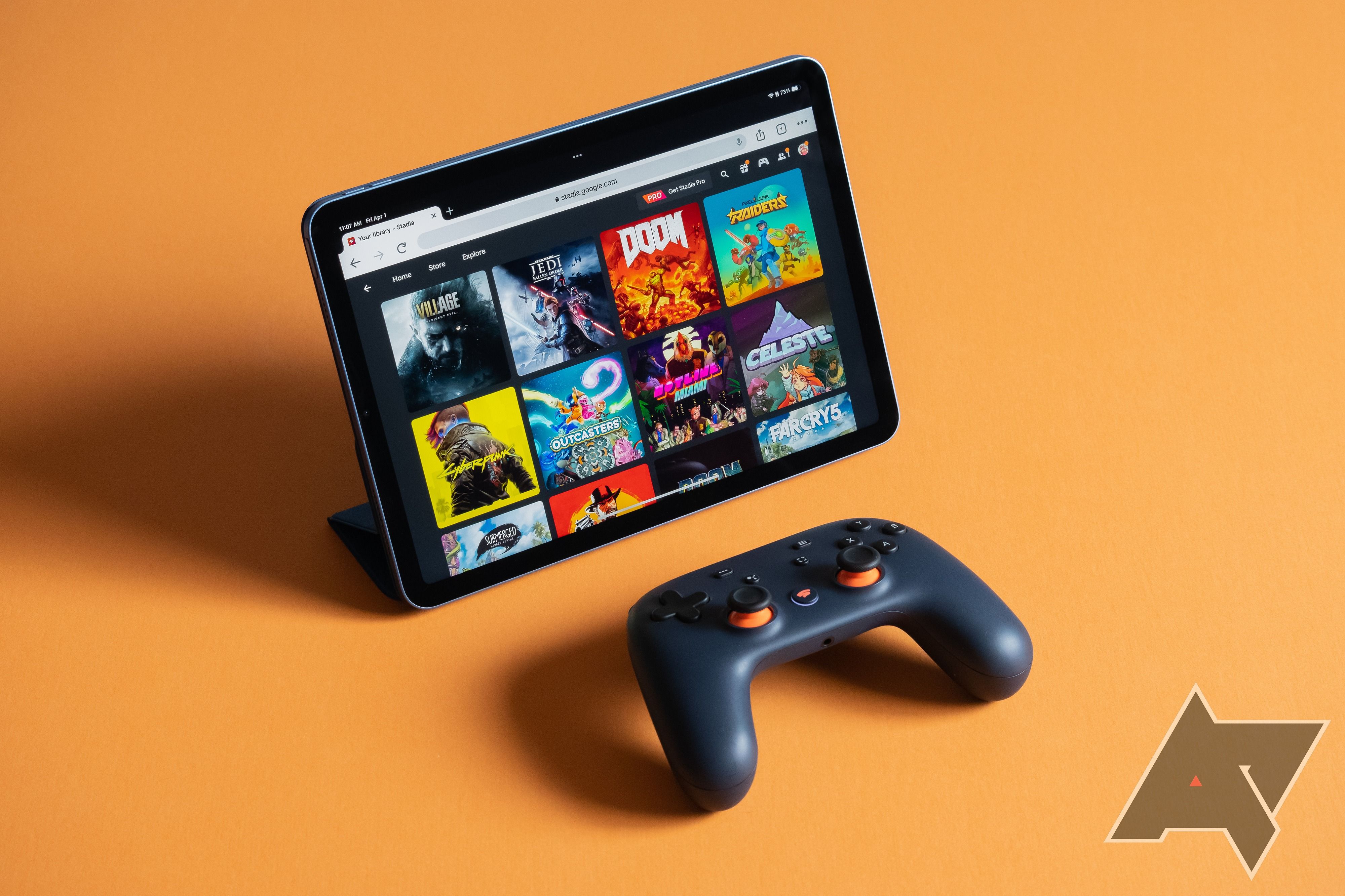
The most notable difference in this year’s iPad Air from the 2020 model is the inclusion of Apple’s M1 chip, which powers not only the most recent iPad Pro, but also a number of the company’s laptop and desktop computers. It’s not Apple’s most powerful CPU anymore — there are now several tiers of M1, this being the lowest — but for a mobile device, it’s wickedly fast. RAM’s also been doubled from four gigs in 2020’s model to eight gigs here.
The iPad Air positively flies through everyday tablet use cases like games and web browsing, and it even shrugs off intensive tasks like editing large images in Adobe Lightroom. I thought mobile photo editing on the 2021 iPad Mini was quick, but boy, I didn’t know what I was missing.
If you’re thinking you don’t have any use for that much horsepower in a tablet, you’re probably not wrong. Despite decent mouse support and pricey accessories like the Magic Keyboard that turns your iPad Air or Pro into a quasi-laptop, iPadOS still isn’t a replacement for a real desktop operating system: File management is awkward, multitasking is a bit of a pain, and you can’t use desktop web browsers. The previous-gen iPad Air is still eminently capable of anything the vast majority of users will want to do on a tablet; for most people, this generation is not an essential upgrade from that one.
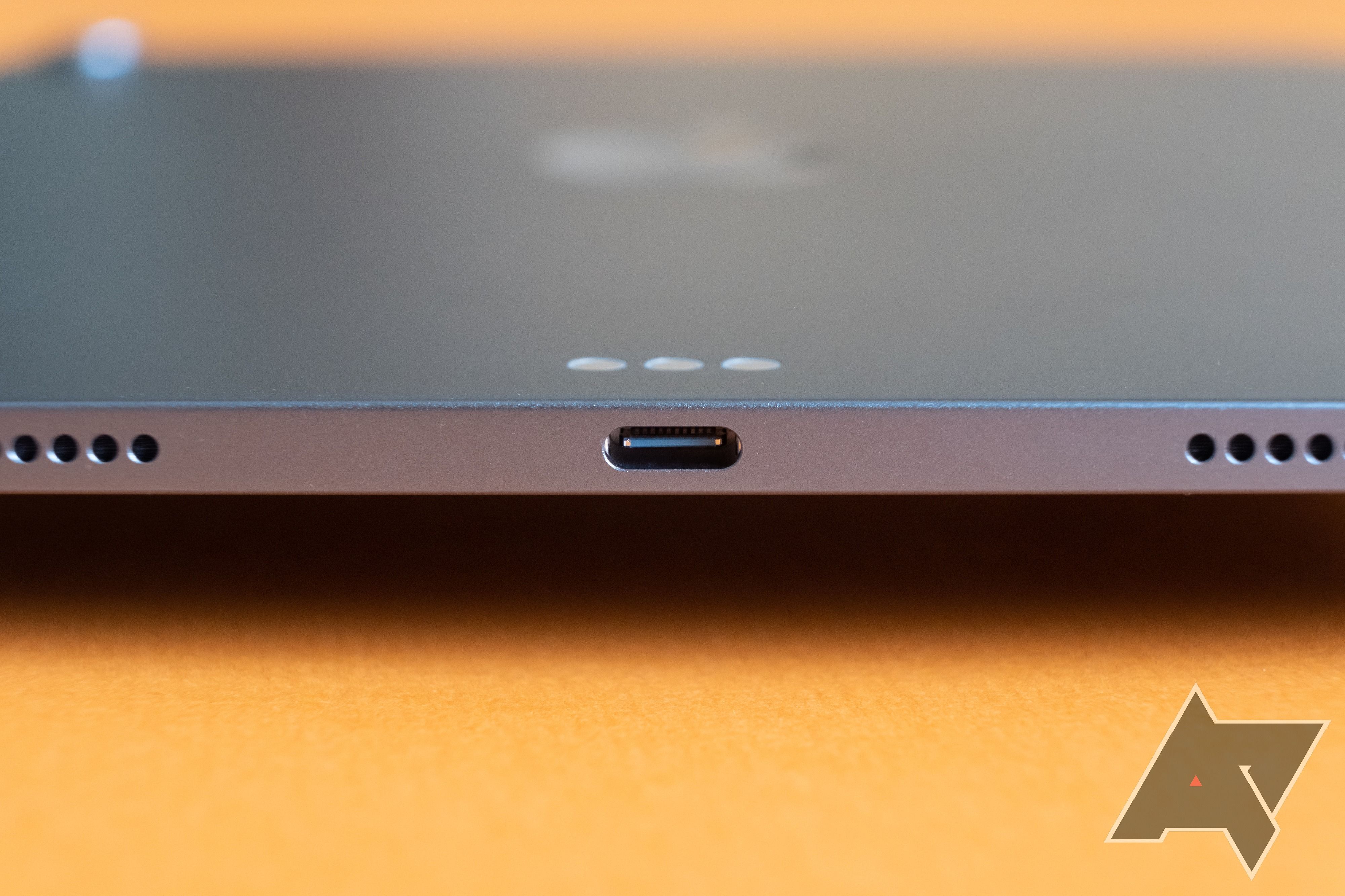
Apple says the new iPad Air’s battery is good for “10 hours of surfing the web on Wi-Fi,” and that seems about right; I haven’t yet seen its battery tap out in a single day. Heavier workloads are obviously more taxing, but assuming you’re not illustrating or playing big 3D games for long stretches, you’ll probably only need to top up every few days.
Should you buy it?
Yes. Google’s hard at work trying to right its tablet wrongs with Android 12L, and apparently also getting back into making its own tablets. That’s all very exciting, but it doesn’t change much right now — and right now, the 2022 iPad Air is a hell of a little machine. It’s among the fastest tablets you can buy — and at $600, it makes most premium Android tablets seem a little silly.
Even if you don’t need a tablet with class-leading computing power today, Apple managed to hit the same MSRP this year as it did with 2020’s iPad Air, and the M1 chip powering this new model guarantees the tablet will feel fast for years to come. Things get a little murkier if the base model’s paltry 64GB of storage space won’t be enough for you, though.
The 2022 iPad Air is a hell of a little machine.
Upgrading to the next storage tier — 256 gigs, not 128 — will run you an extra $150. At $750, you’re a stone’s throw from the 128-gig iPad Pro, which is the same size and uses the same M1 chip, but also has a 120Hz display, Face ID, stereo speakers in portrait or landscape orientation, and more (and better) cameras for $800. If I had to choose between a 256-gig Air for $750 and a 128-gig Pro for $800, I’d go Pro every time — if only because, being used to high-refresh rate displays on Android phones, 60Hz on a tablet looks a little pedestrian.
Apple prices its products like this on purpose; it always wants to nudge you into buying something just a little more expensive. If you’re confident you can get by on 64 gigabytes, though, it’s not easy to find fault with the $600 iPad Air: it’s a materially better product than the previous generation, offered at the same price point. That’s an easy win in my book.
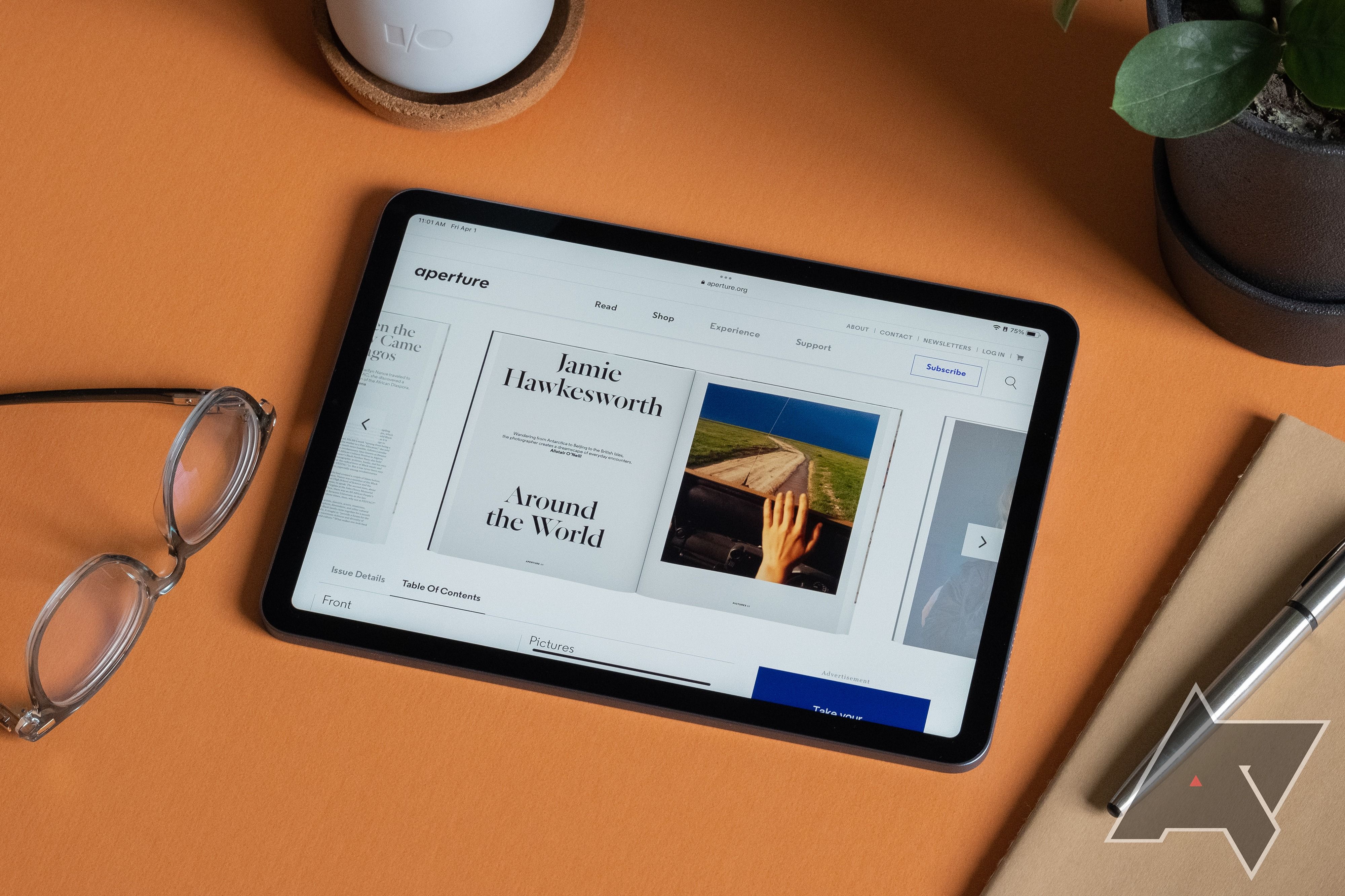
Buy it if…
- Samsung’s recent offerings like the Galaxy Tab S8+ don’t speak to you.
- You’re rocking an older tablet that’s starting to feel slow.
- You have an iPhone or Mac and want to get in on Apple’s neat cross-device features.
Don’t buy it if…
- Android 12L has you especially hopeful about the immediate future of Android tablets.
- Your current tablet meets your needs. The M1-powered Air is quick as hell, but all that power won’t mean much if your workflow never uses it.
- You want to download lots of apps and media. The $600 model only comes with 64 gigabytes of storage.
We hope you like the items we recommend and discuss! AndroidPolice has affiliate
and sponsored partnerships, so we receive a share of the revenue from some of your purchases. This
won’t affect the price you pay and helps us offer the best product recommendations.
About The Author
[ad_2]
Source link










More Stories
Hate speech on Twitter is at its lowest level, down even from pre-spike levels says Elon Musk- Technology News, Firstpost
Building Intelligent Document Processing Systems
Introduction to Building Intelligent Document Processing Systems – Grape Up